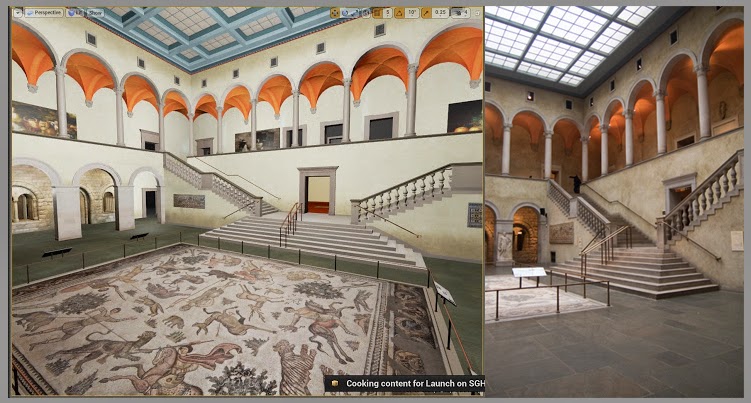PAX EAST 2014, a weekend of learning, communicating and experimenting.
Scott Tongue, Janet Tremblay and Professor Ulm have been working on a project that is very different from your every day average shooter or mmorpg games. The game is a museum simulation that allows individuals with mobility issues or classes of students to enjoy a museum experience. Visitors or players whom may never have the chance to visit a museum due to its location will have a chance to for the first time. Scott is a programing guru, studying for his Bachelor of Arts in Interactive Media Design with a Game Programming Concentration at Becker College. He recently took a trip to California's GDC as a speaker for the game "Beyond Two Souls". He has been programing and incorporating game asset's created by the artist, Janet Tremblay, into the Unreal 4 Engine. He recently made a very difficult transition from UDK 3 to Unreal 4 in the few weeks he had before PAX and was very successful at it.
Janet is an Artist in the Worcester, MA area. Her game assets and art are based on the Worcester Art Museum, a museum based in central Massachusetts that is recognized as an Encyclopedic Museum. She has volunteered her time and talents to this project to help Becker College and the Worcester Art Museum.
The Museum owns a large collection of art from many different cultures and time periods. The Virtual Museum Simulator is currently a work in progress. And this weekend at PAX was an experiment to see how the public would react to this kind of visual stimuli. Janet uses reference photos she has taken and interprets them into models in Autodesk Maya and creates textures using Photoshop.
No one from the Becker team dreamed that it would have gotten the attention that it did. At one point there was a line to tryout the Oculus and they had to place tape on the floor to manage visitors in the area. Many young individuals were interested in trying it out and we received valuable feedback and positive reactions.
There was even talk of a person with a visual disability who was legally blind who had a chance to use the simulator for the first time. They were excited because they were able to visit a museum and actually see it as though a person with normal vision would. Unlike using your eyes to focus into a large room, depth perception is different with the Rift. When you are visually impaired it is very difficult to make out objects, shapes and figures 3 feet or more away from your origin. The Oculus Rift is placed on your head. It encompasses 2 screens one for each eye and they are positioned about an inch away from your view. For someone who is visually impaired this experience of seeing a room an inch away does not strain the eyes to focus on the real space as you are focusing on the surface that is right in front of you, making it a unique experience. It was also amazing to see visitors reach out to touch objects that did not exist or surfaces that were not there.
All in all the weekend was a success. The team was able to see the potential in what they can do and where they can go with this project.




